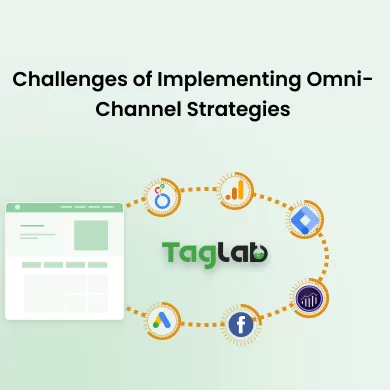Your cart is currently empty!
Blog Traffic Metrics
Posted by:
|
On:
|
Blog Traffic encompasses various key performance indicators (KPIs) that measure the number of visitors and their interactions with a blog over a specified period. This collection of metrics helps businesses understand the reach and visibility of their blog content and the effectiveness of their content marketing strategies.
Detailed Explanation
What is Blog Traffic?
Blog Traffic includes metrics such as unique visitors, page views, sessions, and bounce rate. Tracking these metrics provides insights into how well the blog attracts and engages readers. Higher traffic indicates that the blog is successfully reaching its target audience, which can lead to increased brand awareness and potential conversions.
How it Works?
Blog Traffic provides insights into the popularity and reach of blog content. By analyzing traffic patterns, businesses can identify which topics and posts resonate most with their audience. Consistently high traffic suggests that the blog content is valuable and relevant to readers, while fluctuations in traffic can indicate the effectiveness of different promotional strategies.
Types of Blog Traffic Metrics
- Unique Visitors: The number of distinct individuals who visit the blog over a specific period.
- Page Views: The total number of pages viewed on the blog.
- Sessions: A session is a group of interactions that take place on the blog within a given time frame.
- Bounce Rate: The percentage of visitors who leave the blog after viewing only one page.
Illustrative Scenarios
Examples
- If a blog receives 10,000 unique visitors, 20,000 page views, and 15,000 sessions in a month, these are the Blog Traffic metrics.
- If another blog post receives 5,000 page views and 3,000 unique visitors in a week, these are the Blog Traffic metrics for that post.
Segmentation
Analyzing Blog Traffic by different segments (e.g., by traffic source, content type, or audience demographics) can provide deeper insights. For example, comparing traffic from different sources can help optimize promotional strategies for each channel.
Factors Influencing Blog Traffic
- Content Quality: High-quality, engaging content attracts more visitors.
- SEO Optimization: Optimizing blog posts for search engines increases organic traffic.
- Promotion Strategies: Effective promotion through social media, email, and other channels drives more traffic.
- User Experience: A well-designed, easy-to-navigate blog encourages repeat visits and longer sessions.
Strategies to Improve Blog Traffic
- Creating Valuable Content: Develop high-quality, informative, and engaging content that addresses the needs and interests of the target audience.
- Optimizing for SEO: Use SEO best practices to optimize blog posts for search engines and increase organic traffic.
- Promoting Content Effectively: Utilize multiple channels, such as social media, email, and partnerships, to promote blog content and drive traffic.
- Improving User Experience: Ensure the blog is user-friendly, with easy navigation, fast load times, and a responsive design.
Blog Traffic Benchmarks
Blog Traffic benchmarks vary by industry and type of blog. For example:
- Technology Blogs: Typically have monthly traffic ranging from 10,000 to 50,000 unique visitors.
- Health and Wellness Blogs: Traffic often ranges from 20,000 to 60,000 unique visitors per month.
- Finance Blogs: Monthly traffic usually ranges from 15,000 to 45,000 unique visitors.
Comparing your Blog Traffic against industry standards can help gauge performance and set realistic goals.
Tools for Measuring Blog Traffic
- Web Analytics Tools: Platforms like Google Analytics provide detailed traffic metrics and analysis.
- Content Management Systems (CMS): Tools like WordPress and HubSpot offer traffic tracking and reporting features.
- SEO Tools: Platforms like SEMrush and Ahrefs provide insights into organic traffic and search performance.
- Social Media Analytics Tools: Tools like Facebook Insights and Twitter Analytics track traffic from social media platforms.
Common Pitfalls and Mistakes
- Ignoring SEO Best Practices: Failing to optimize blog posts for search engines can result in lower organic traffic.
- Overlooking Content Quality: Poor-quality content can lead to lower engagement and traffic.
- Neglecting Promotion: Not promoting blog content effectively can result in missed traffic opportunities.
- Poor User Experience: A poorly designed blog can discourage repeat visits and reduce overall traffic.
Frequently Asked Questions
What is Blog Traffic?
Blog Traffic encompasses various metrics such as unique visitors, page views, sessions, and bounce rate. These metrics help businesses understand the reach and visibility of their blog content and the effectiveness of their content marketing strategies.
Why is Blog Traffic important?
Blog Traffic is important because it indicates the popularity and reach of blog content. Higher traffic suggests that the blog is effectively attracting and engaging visitors, which can lead to increased brand awareness and potential conversions.
How can I improve my Blog Traffic?
Improving Blog Traffic can be achieved by creating valuable content, optimizing for SEO, promoting content effectively, and improving the user experience on the blog.
What factors influence Blog Traffic?
Factors influencing Blog Traffic include content quality, SEO optimization, promotion strategies, and user experience. Addressing these factors can help increase traffic to the blog.
What is a good benchmark for Blog Traffic?
A good benchmark for Blog Traffic varies by industry. Technology blogs typically range from 10,000 to 50,000 unique visitors per month, health and wellness blogs from 20,000 to 60,000, and finance blogs from 15,000 to 45,000. Comparing against industry benchmarks can help set realistic goals.



